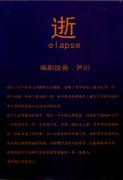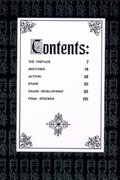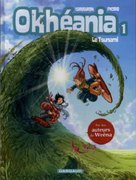News
Lau Wan Kit's Feel 100% Wins 2nd Int'l Manga Award
posted on by Egan Loo
China's Yin Chuan, Russia's Svetlana Chezhina, France's Alice Picard earn honors
 The Ministry of Foreign Affairs of Japan has announced the winner and runners-up of its Second International Manga Awards on Tuesday. Hong Kong's Lau Wan Kit won the top award for Feel 100%. The 1992 manga follows the love triangles between two male best friends, their female friend, and their various acquaintances; the story has already been made into four films and a television series. China's Yin Chuan (elapse), Russia's Svetlana Chezhina (Portrait), and France's Alice Picard (Okhéania 1) won awards of excellence.
The Ministry of Foreign Affairs of Japan has announced the winner and runners-up of its Second International Manga Awards on Tuesday. Hong Kong's Lau Wan Kit won the top award for Feel 100%. The 1992 manga follows the love triangles between two male best friends, their female friend, and their various acquaintances; the story has already been made into four films and a television series. China's Yin Chuan (elapse), Russia's Svetlana Chezhina (Portrait), and France's Alice Picard (Okhéania 1) won awards of excellence.International Manga Award
 Lau Wan Kit
Lau Wan KitFeel 100%
Awards of Excellence
 Yin Chuan
Yin Chuanelapse
 Chezhina Svetlana Igorevna
Chezhina Svetlana IgorevnaPortrait
 Alice Picard
Alice PicardOkhéania 1
An awards ceremony and reception will be held on September 2, and Foreign Minister MASAHIKO Kōmura is scheduled to present the trophies to the honorees. Over the next ten days, the honorees will also attend the Kyoto Manga Summit and meet with Japanese manga artists.
This year's judges were Machiko Satonaka (Lady Ann), Monkey Punch (Lupin III), Takao Yaguchi (Tsurikichi Sampei), Teruo Miyahara (former Weekly Shōnen Magazine editor-in-chief), and Yoriaki Yakubo (former Weekly Shonen Sunday editor-in-chief). A total of 368 entries were submitted from 46 countries. This total included 156 entries from Asia, 66 from the Americas, 114 from Europe, 4 from the Pacific Islands, 23 from the Middle East, and 5 from Africa. Only 222 entries from 22 countries were submitted during the first year of the awards. The countries with the most submissions this year were as follows:
Indonesia: 50
China: 59 (including 5 from Hong Kong)
Russia: 27
United States: 25
Brazil: 22
France: 16
Singapore: 14
Great Britain: 14
Thailand: 12
Malaysia: 11
Myanmar: 11
Saudi Arabia: 10
Canada: 9
Spain: 9
Another Hong Kong artist, 43-year-old Lee Chi Ching, won the first International Manga Award last year for his Sun Zi's Tactics comic series. China's Kai (1520), Malaysia's Benny Wong Thong Hou (Le Gardenie), and Australia's Madeleine Rosca (Hollow Fields) won the awards of excellence last year. Former Japanese Foreign Minister Tarō Asō, a self-professed manga fan, announced the creation of the awards in May of 2007.
Source: animeanime.jp
discuss this in the forum (2 posts) |
this article has been modified since it was originally posted; see change history